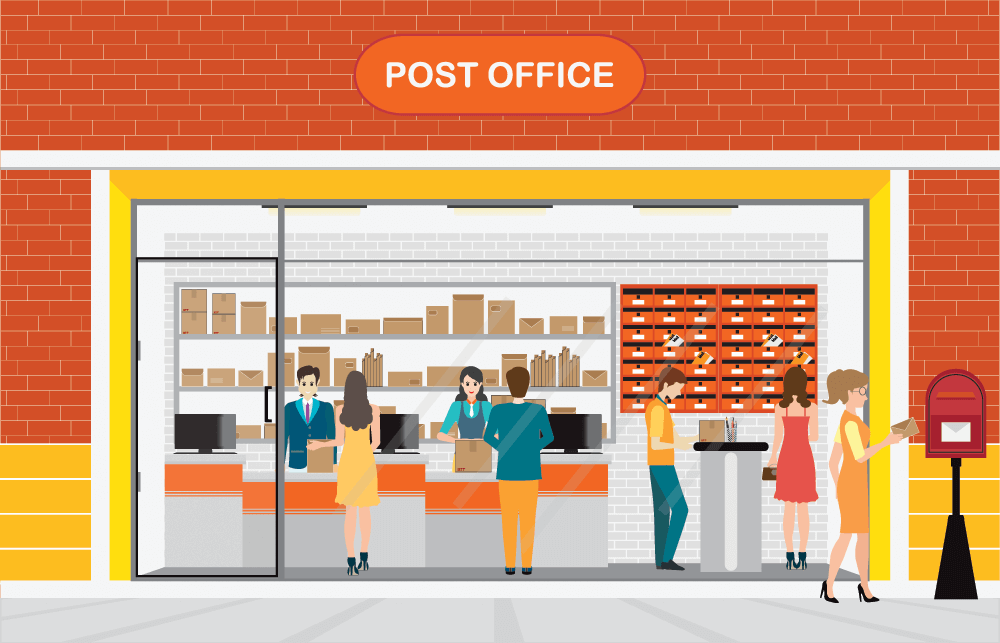A Look Back at the Postal Reorganization Act of 1970: Part 2 of 2

(This is the second part of our exploration of the challenges faced by the United States Postal Service since the USPS was created in 1971.)
In the last 160 years, there have been many changes in how Americans get and send their mail. Even more has changed since the USPS began operating as an independent agency a half-century ago. Perhaps nothing is more interesting, however, than the history of rate changes for first class mail.
• In March 1863, a first-class letter cost $0.06 per ounce to mail. The price did not change for more than 20 years, and it was actually a decrease.
• In October 1883, the rate dropped to $0.04 per ounce.
• In July 1885, the rate dropped again, and the cost of mailing a letter became $0.02 per ounce.
• In November 1917, World War I was raging, and the rate for first-class letters increased to $0.03 per ounce. In July 1919, the price returned to its prewar rate of $0.02 per ounce, and it remained there for 13 years.
• In July 1932, the rate for a first-class letter increased to $0.03 per ounce.
• In August 1958, the price of a first-class letter increased to $0.04 per ounce, marking the first rate hike in more than 26 years.
• In January 1963, the rate increased to $0.05 per ounce. Five years later, the rate increased another penny to $0.06 per ounce.
• In May 1971, the rate for a first-class letter increased to $0.08 per ounce.
• In March 1974, the rate increased to $0.10 per ounce.
• In September 1975, the USPS began offering a lower rate for additional ounces for the first time. The first ounce still cost $0.10, but additional ounces only cost $0.09 each. By the end of the year, rates had increased again; the first ounce increased to $0.13, and the rate for additional ounces increased to $0.11.
• In May 1978, the rates were $0.15 and $0.13 for the first ounce and additional ounces, respectively.
• In March 1981, the rates were $0.18 and $0.17.
• In March 1981• In November 1981, the rate for the first ounce increased to $0.20, but there was no change to the rate for additional ounces., the rates were $0.18 and $0.17.
• In February 1985, the rate for the first ounce rose to $0.22; the rate for additional ounces did not change.
• In April 1988, the rates increased to $0.25 for the first ounce and $0.20 for additional ounces. Less than three years later, the rates were changed to $0.29 and $0.23.
• In January 1995, the rates were $0.32 and $0.23, then they changed to $0.33 and $0.22 in January 1999.
• In January 2001, a first-class letter cost $0.34 for the first ounce and $0.21 for each additional ounce. However, in July of that year, the rate for additional ounces increased to $0.23 per ounce.
• In June 2002, the first-ounce cost increased to $0.37; there was no change in the rate for additional ounces.
• In January 2006, rates increased to $0.39 for the first ounce and $0.24 for each additional ounce.
• May 2007 marked the first year of a flurry of rate changes. In 2007, the first-ounce rate was $0.41, then it increased to $0.42 in 2008 and $0.44 in 2009. Additional ounces cost $0.17 per ounce from 2007 until 2011, at which time the USPS began charging different rates for additional ounces for letters and packages. The package rate for additional ounces remained at $0.17 until May 2015, but the letter rate for additional ounces increased to $0.20 per ounce from April 2011 until January 2014.
• In January 2018, the price for the first ounce increased to $0.50, and the rate for additional ounces for packages increased dramatically to $0.35 per ounce. This was the last year that the USPS offered different rates for additional ounces for packages and letters.
• In January 2019, the first-ounce rate jumped to $0.55, increasing to $0.58 in August 2021 and $0.60 in July 2022.
If you are wondering why all of this matters, you only need to do the math. Even inexperienced home-based business owners typically understand the need to have a reasonable pricing strategy that reflects a realistic picture of their sales volume. Moving half as much volume would require doubling the price just to stay even, and that has not happened with the USPS. In fact, taken over a period of 50 years, the rate increases have not even offset the additional expenses related to inflation.
If Rate Increases Are Not Enough, What Is the Answer?
Unfortunately, there is no simple answer. The solution is likely to require a combination of steps similar to what a private corporation would take. Some possibilities are listed below, but many of them might prove too unpopular for the USPS to consider.
1. Allow homeowners to use a virtual mailbox service as their primary delivery address, essentially consolidating USPS deliveries to a single location. Currently, the USPS will not indefinitely allow a homeowner to redirect their mail from their home to a virtual mailbox service. Many homeowners would enjoy having their mail permanently received and processed by a third party and made available for them to view and manage online from anywhere in the world. Imagine thousands of homes using a single virtual mailbox service as their mail delivery address; this means that the USPS doesn’t have to deliver the mail to thousands of homes; they only have to deliver to a single virtual mail service location. This would save untold amounts of money for the USPS.
2. When a chain of stores or restaurants has unprofitable locations, they tend to close them. The USPS may seriously consider shuttering some post offices through the process of consolidation. For example, if there is a town of 200 people that lies less than 10 miles from a town of 300 people, does each town really need its own post office, or would it make more sense to let one post office serve both towns?
3. Making it easier for consumers to avail themselves of online or self-serve postal services could possibly help. One example would be vending machines that dispense stamps, packets for sending certified mail, or other supplies that could be placed in secure locations, including convenience stores, 24-hour restaurants, or bank lobbies. Whether online or through a vending machine, do-it-yourself services could reduce staffing at some locations, or they could replace a low-volume post office.
4. Eliminate Saturday deliveries to residential addresses. This idea has been proposed more than once, but objections from consumers have led the USPS to table the move in most locations. By cutting deliveries from six days to five, the USPS could reduce the cost of wages, especially in areas where Saturday deliveries often mean paying overtime.
5. Add more cluster mailboxes. In many cities, mobile home parks, apartment complexes, and gated communities already have centralized locations for all mailboxes. Each address is assigned a locking mailbox from which tenants need to collect their mail. Cluster mailboxes reduce the time that carriers need to deliver the same volume of mail.
6. Pay more attention to what the competition is doing right, then borrow their concepts. For example, Amazon offers self-service parcel lockers that are located in convenience stores, at airports, on college campuses, and in a variety of other places. When customers place an order, they can choose to have it delivered to a locker. Customers are given a unique code that they enter to retrieve their packages. This type of system could be part of the solution for towns that lose their post offices; instead of having to go to the post office during its normal business hours to pick up packages, they could retrieve them from a locker at their convenience.
7. Reduce the number of facilities that must handle each piece of mail. Here is an illustrative scenario. An individual mails a letter from a small town (A) to a recipient in a larger town (B) just 35 miles away. The letter goes to town B, but it is then sent to a hub 60 miles away for processing. The hub then returns the letter to town B for delivery. In some cases, a letter mailed in town A to a recipient in the same town will still be routed to town B and the hub before arriving back at town A for delivery.
8. USPS convinces the federal government to reverse the requirement to pre-fund retirement benefits as well as refund the overpayments already made. This single step could go a long way toward returning the USPS to a financially stable, debt-free enterprise.
Lastly, but perhaps most importantly, the federal government treats the USPS like an entitlement expense (government expense, e.g., the IRS, Homeland security, Dept. of Education, etc.) Many believe that mail, shipping, and receiving are critical services to the health of a country. Whether you are running a small business, a large corporation, or a single parent ordering household goods, it is imperative that there is a low-cost shipping and receiving option. Treating the USPS as an expense rather than a for-profit business may make the most sense. The USPS would still charge for its services but it wouldn’t get so hung up on not being profitable or at the very least breaking evening.



